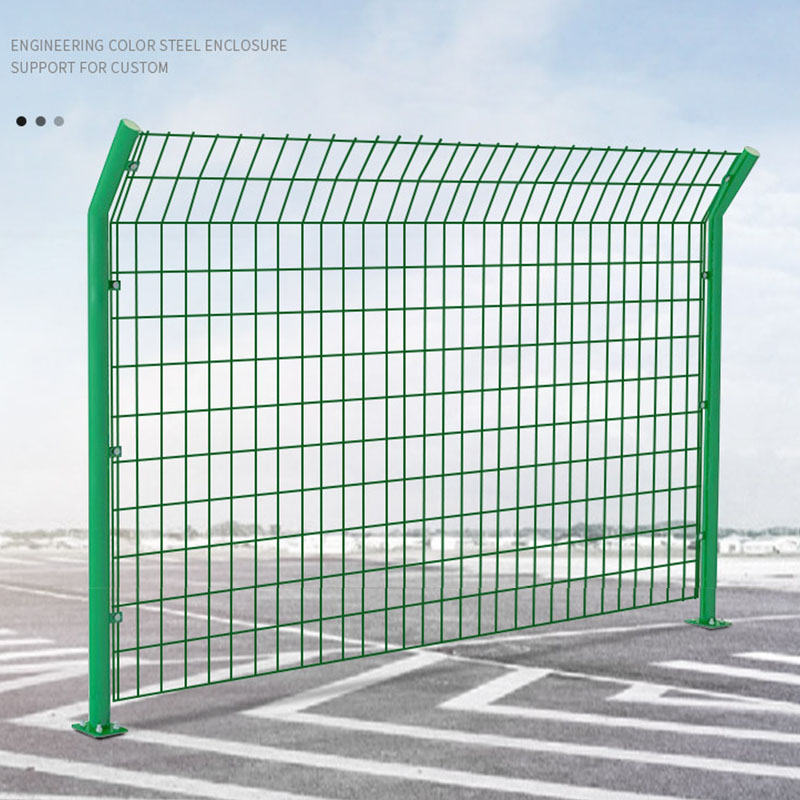In the realm of property security and boundary delineation, double wire fences have emerged as a popular choice for homeowners and businesses alike. Renowned for their durability and effectiveness, these fences provide a robust barrier while also offering aesthetic appeal. One of the key considerations for anyone contemplating the installation of such a fence is the ease of the installation process. In this comprehensive guide, we delve into the intricacies of installing double wire fences, providing insights and tips for a seamless experience.

Before delving into the installation process, it's imperative to grasp the fundamentals of double wire fences. These fencing mesh consist of two horizontal wires spaced apart with vertical wires welded between them at regular intervals. This design imparts strength and stability to the fence, making it suitable for various applications ranging from residential to commercial and industrial settings.
Strength and Durability: Double wire fences are renowned for their robustness, capable of withstanding harsh weather conditions and external forces.
Security: With their sturdy construction, these fences provide an effective barrier, enhancing the security of the enclosed area.
Aesthetic Appeal: Beyond functionality, double wire fences add an element of visual appeal to properties, blending seamlessly with different architectural styles.
Low Maintenance: Once installed, these fences require minimal upkeep, making them a practical choice for property owners seeking convenience.
A successful double wire fence installation begins with thorough preparation. Here are the key steps to ensure a smooth process:
Before commencing installation, conduct a comprehensive assessment of the site where the fence will be installed. Take note of any obstacles, slopes, or uneven terrain that may impact the installation process.
Ensure you have all the required tools and materials on hand before starting the installation. This may include wire mesh panels, posts, concrete, wire cutters, pliers, and a level.
Check local regulations and obtain any necessary permits or permissions required for installing the fence. Failure to comply with regulations could result in fines or legal issues.
With the groundwork laid, it's time to proceed with the installation of the double wire fence. Follow these step-by-step instructions for optimal results:
Begin by marking the boundary where the fence will be installed using stakes and string. Ensure the line is straight and accurately represents the desired fence alignment.
Using a post hole digger, excavate holes at regular intervals along the marked fence line. The depth and diameter of the holes will depend on the size and type of posts being used.
Place the posts in the excavated holes, ensuring they are aligned and level. Use concrete to secure the posts in place, allowing sufficient time for the concrete to cure before proceeding.
Once the posts are firmly set, attach the wire mesh panels to the posts using appropriate fasteners such as wire ties or clips. Ensure the panels are positioned evenly and securely.
If applicable, install top rails along the top of the fence panels for added stability and aesthetic appeal. Secure the rails to the posts using brackets or screws.
Inspect the completed fence for any gaps or loose components, making any necessary adjustments or repairs. Trim any excess wire and ensure all connections are secure.
In conclusion, while the installation of double wire fences may seem daunting at first, following a systematic approach and adhering to best practices can result in a successful outcome. By understanding the fundamentals of fence installation and meticulously planning each step, property owners can enjoy the benefits of enhanced security and aesthetics that these fences offer.
Previous: Understanding the JIS Pressed Swivel Coupler
Next: What Are the Differences Between GFS Tank and Stainless Steel Tank?
Copyright:@2020-2021
Comments Please sign in or sign up to post.
0
0 of 500 characters used